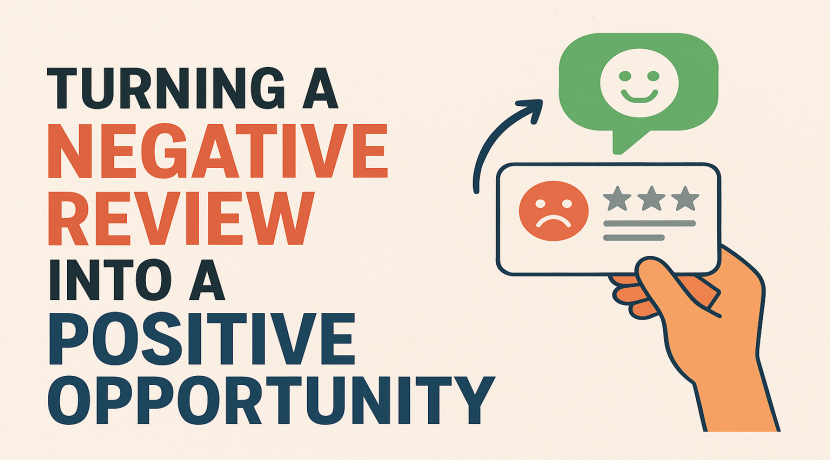
Turning a Negative Review into a Positive Opportunity
2025-Nov-03
In today’s digital-first marketplace, the impact of a single negative review can ripple far beyond a disgruntled customer. For tech enthusiasts and small business owners alike, online reviews define public perception, directly affecting sales, brand trust, and even search engine rankings. Understanding the true consequences — and learning how to respond effectively — is essential for surviving and thriving in a competitive environment.
How Negative Reviews Impact Sales and Revenue
Negative feedback is more than just a complaint: it’s a measurable revenue event. Studies show that a single bad review on a product page can reduce purchase probability by over 50% for that session and cause an 18% long-term sales hit for the affected item. Small businesses especially feel the pinch, as each negative comment is far more visible compared to big retail chains.
- - Every star lost on rating platforms equates to a 10% decrease in revenue, according to Harvard Business Review.
- - Four or more negative reviews can decrease sales by up to 70%.
- - After two bad experiences, approximately 80% of customers switch to a competitor.
- - Only 9% of shoppers will consider a business with a 1–2 star rating, while over 50% require a rating of 4 stars or higher.
- For businesses, these numbers aren’t just theoretical — they represent lost revenue, missed opportunities, and a shrinking customer base.
Rebuilding Brand Reputation and Customer Trust
Trust is the ultimate business asset, but negative reviews quickly erode it. According to Bright Local, 40% of consumers form an opinion after reading just 1–3 reviews, amplifying the impact of even a single critical comment. For small businesses, where each customer’s voice is louder, trust can be shattered almost instantly.
- 86% of buyers read how companies respond to bad reviews before deciding whether to trust them.
- Over half of consumers say their impression of a business changed based on how that business replied to critical feedback.
- A Deloitte study highlighted that one in five consumers spend up to 50% more with brands they trust.
The good news? Thoughtful, prompt, and honest responses to negative feedback can begin to restore trust and encourage repeat business.
Tech Industry Realities: Negative Reviews in Action
Tech companies and startups face intense scrutiny as digital-savvy consumers are quick to share their experiences. Recent examples in the tech industry show just how far-reaching the consequences can be:
- A negative review citing poor customer service or frequent product failures can go viral, deterring thousands of potential users from adopting new technology.
- In one real-life example, a small business with 22 years in the community saw a Google review remain at the top of its ratings, changing local perceptions overnight.
- Even the largest software brands have felt public backlash from negative user feedback, resulting in falling app rankings, customer churn, and lost partnerships.
But technology brands that proactively engage and resolve issues often turn critics into loyal ambassadors, proving that negative feedback can inspire innovation and improvement.
Managing and Leveraging Negative Reviews for Growth
Treating negative reviews as a growth opportunity is crucial. Businesses that actively monitor, respond, and mitigate negative feedback don’t just limit the damage — they can actually boost brand credibility.
Best Practices for Managing Negative Reviews:
- Respond swiftly and empathetically to every complaint, demonstrating that you value customer voices.
- Use feedback as actionable insight into product or service weaknesses.
- Encourage satisfied customers to share positive experiences to offset the impact of a bad review.
- Consider partnering with reputation management services such as RatingGrow.io, where you can start with a free trial or register for expert online review management (get started here).
Remember: you may need up to 40 positive reviews to counteract the damage from a single negative one.
The Long-Term Effects: Beyond Immediate Sales
Negative reviews affect more than just this quarter’s profit margin. They can:
- Influence local search visibility, pushing your business down in Google’s rankings.
- Erode long-term customer loyalty, especially if complaints go unaddressed. Force businesses to offer discounts or added incentives just to win back lost trust, impacting margins.
However, responsive businesses have the chance to transform criticism into an example of transparency and customer-centricity, establishing a stronger reputation over time.
FAQs
How
quickly should I respond to negative reviews?
Responding within 24–48 hours is generally recommended as it demonstrates your
commitment to customer feedback and can help resolve issues before they
escalate.
Can
negative reviews ever be helpful for my business?
Yes! Negative reviews can highlight real issues, provide a chance to improve,
and when addressed properly, boost public trust and attract new customers who value
transparency.
What’s
the best way to manage online reviews for my business?
Investing in professional reputation management solutions such as RatingGrow.io allows for more strategic monitoring,
personalized responses, and improved overall review profiles.